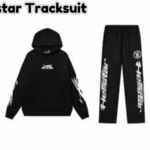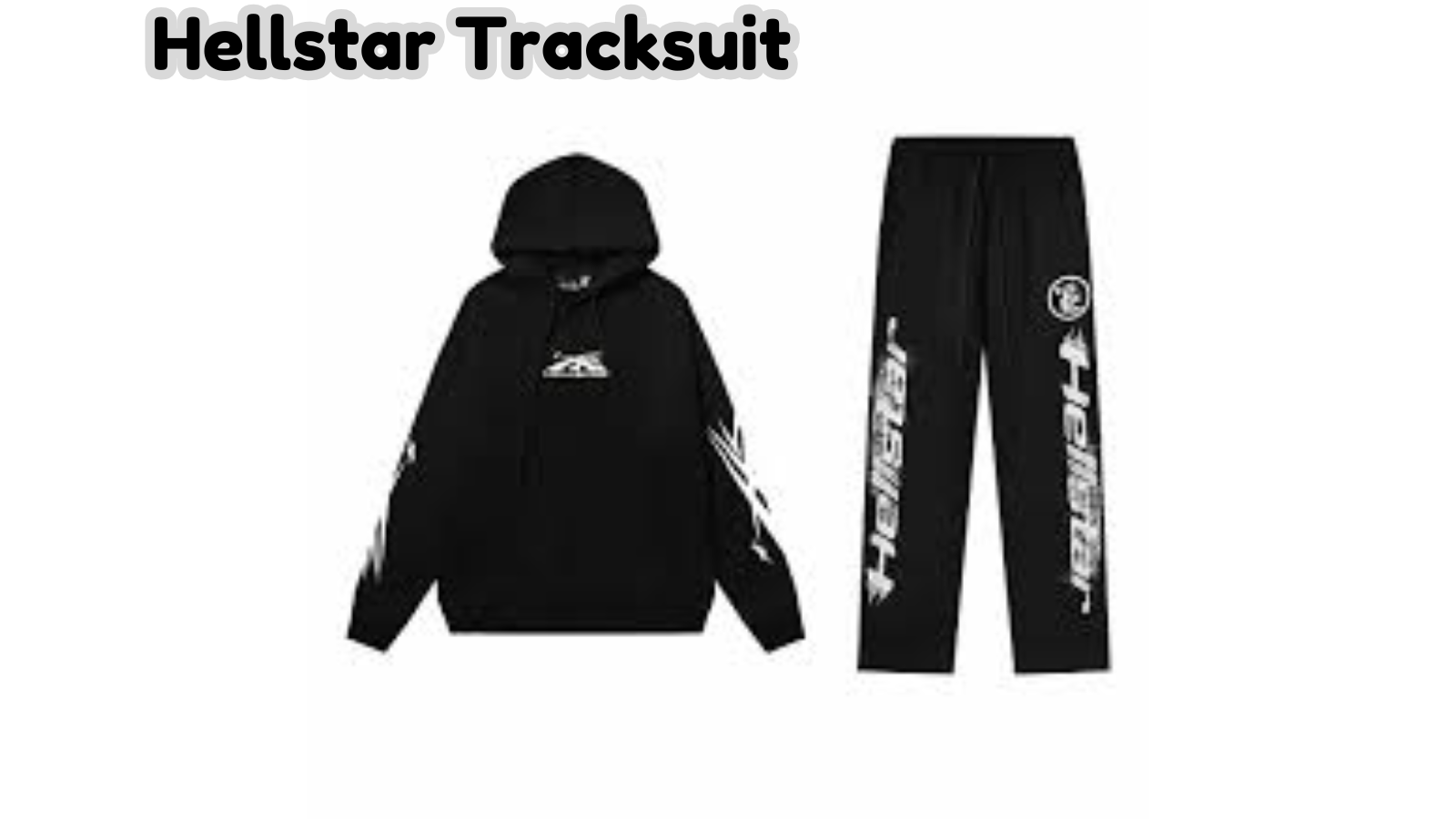Introduction to Fauxmoi
The term ‘fauxmoi‘ emerges from the intersection of two vital concepts—’faux,’ which signifies imitation or replication, and ‘moi,’ a French term meaning ‘me’ or ‘myself.’ This innovative term has evolved to encapsulate the fusion of fashion and personal expression through the lens of artificial and curated aesthetics. Originating in response to the growing desire for authenticity in an era dominated by digital representation, fauxmoi represents a groundbreaking shift in how individuals engage with fashion and personal style.
As consumers increasingly seek to differentiate themselves in a crowded marketplace, fauxmoi provides an alternative narrative. The concept challenges traditional notions of authenticity by reimagining personal style as an artifice enabled by digital tools. This evolution has been facilitated by social media platforms that encourage users to craft their identities through curated visual content. Thus, fauxmoi signifies not just a fashion trend but a cultural movement that acknowledges the complexities of self-representation in a digitized world.
The aesthetic characterized by fauxmoi harmonizes the allure of high fashion with accessibility, allowing individuals from different walks of life to engage meaningfully with contemporary style. This democratization of fashion extends beyond mere imitation; it elevates personal storytelling, where what one wears can communicate values and aspirations rather than just adherence to conventional standards. The blurred lines between reality and artifice invite deeper conversations about identity, representation, and the commercial aspects of the fashion industry.
In exploring the implications of fauxmoi, one uncovers the balance between authenticity and artifice, inviting fashion enthusiasts and scholars alike to reconsider the parameters of style and influence. As the industry continues to adapt to these emerging paradigms, the exploration of fauxmoi positions itself at the forefront of fashion discourse, promising to shape the future of how we understand influence and identity in our sartorial choices.
The Role of Social Media in Shaping Fauxmoi
The emergence of social media platforms, such as Instagram, TikTok, and YouTube, has played a pivotal role in the proliferation of fauxmoi—a term capturing the essence of style and presentation devoid of authenticity. These platforms have established themselves as the new digital catwalks, where influencers demonstrate an array of styles often characterized by their exaggerated and curated visual elements. Within this framework, the fauxmoi concept transcends traditional fashion narratives, creating an interactive and visually driven environment that fosters consumer engagement.
Influencers on these platforms are key conduits for disseminating faux fashion trends. They often adopt a diverse range of aesthetics, setting the stage for their followers to aspire towards these visually striking yet sometimes superficial representations of style. The dynamic nature of these social platforms allows for rapid trend evolution; what is ‘in’ one day may be deemed outdated the next. This phenomenon places immense pressure on consumers to stay updated, often leading to a transactional approach to fashion where individuals seek to replicate the latest looks presented in their feeds.
Furthermore, the impact of social media on fauxmoi extends to consumer perceptions of authenticity and brand loyalty. As influencers curate their personal brands, they curate the fauxmoi associated with them, creating a compelling narrative that resonates with audiences. Followers often internalize these curated images, perceiving them as benchmarks of style and elegance. However, the blurred lines between authenticity and artifice can lead to a critical reflection on consumerism, challenging individuals to reconsider their motivation for emulating these influencers.
Ultimately, social media not only shapes the trends associated with fauxmoi but also stimulates discussions about fashion’s evolving relationship with authenticity. The intersection of digital influence and consumer culture continues to redefine how fashion is perceived in contemporary society, highlighting the duality of aspiration and reality within the realm of style.
Fauxmoi and Sustainable Fashion
The relationship between fauxmoi and sustainable fashion practices is becoming increasingly significant in today’s eco-conscious society. With the fashion industry being one of the leading contributors to environmental degradation, there is a pressing need to find alternatives that align with sustainable principles. Fauxmoi, as a trendsetter in the digital fashion realm, plays a crucial role in promoting ethically-made clothing and the recycling of fashion trends.
Recycling fashion trends has gained traction among consumers who prioritize sustainability. Fauxmoi encourages individuals to look beyond fleeting styles and embrace timeless pieces that can be repurposed or restyled across various seasons. This not only reduces waste but also fosters a culture of mindful consumption, where quality takes precedence over quantity. By showcasing sustainable fashion choices, fauxmoi platforms can inspire followers to invest in durable items that minimize their carbon footprint.
Check out innovative ideas or visit the latest updates. Stay informed with lucksnote and technical insights from xn--sandrahller-zhb.de. Discover Tech Times, Knowledge, and future trends. For more, visit this portal, magazines, and tech tips. Stay updated with this blog and this tech portal. Get updates on urban flux news, BizFocus, and MagazineSpot. Explore KapMag, Tonpie, and Babop for more content. Visit MZHub, Trendpilo, AllGT, and Welt-2 for exciting updates. For celebrity news, check out Wolf Fame and Elon World. Stay informed with USA Full Times, Pros Magazines, and Handwerks Welts. Finally, visit Jamza, Zug News, and Wamie!
Moreover, the increasing appeal of faux materials demonstrates a shift in consumer preferences. These alternatives, which often mimic the appearance of traditional luxury textiles without the associated ethical and environmental drawbacks, are becoming more desirable. Fauxmoi stands at the forefront of this movement, advocating for options that eliminate the need for animal-derived products and their resource-intensive production processes. This paradigm shift is essential for fashion enthusiasts who seek to blend style with responsible choices.
In conclusion, the fusion of fauxmoi and sustainable fashion highlights a transformative approach to style. By focusing on recycling trends, supporting ethically-made clothing, and promoting faux materials, fauxmoi not only enhances aesthetic appeal but also urges a collective responsibility towards a greener future in the fashion industry. Embracing these principles can lead to a significant reduction in the negative impact fashion has on the planet, shaping a more sustainable landscape for future generations.
The Psychology Behind Fauxmoi
The phenomenon of fauxmoi reflects the intricate relationship between consumer psychology and fashion. As individuals increasingly curate their identities through the lens of style, they are drawn to fauxmoi aesthetics, which blend authenticity with carefully constructed personas. This duality raises important questions about the motivations behind fashion choices in a contemporary context. With a society that values both individual expression and communal validation, the allure of fauxmoi becomes evident. Individuals are not merely interested in clothing; rather, they seek the affirmation and connection that comes from projecting a meticulously crafted image.
One psychological factor contributing to the popularity of fauxmoi is the human desire for authenticity. Amidst an overwhelming influx of curated digital content, many consumers find solace in self-expression that feels genuine. The rise of social media influencers who embody the fauxmoi ideal reflects this trend, showcasing a blend of relatable experiences and aspirational lifestyles. The ability to present oneself in a curated but seemingly approachable manner fosters a sense of community and belonging among followers. This creates a cycle where individuals are drawn to fauxmoi styles, hoping to replicate or relate to the perceived authenticity these figures present.
Conversely, the allure of curated personas reflects deeper societal trends, such as the increasing importance of visual identity in a digital-first world. The fauxmoi aesthetic thrives in environments where social validation is paramount. Consumers are influenced by what they see online, often leading to the adoption of looks that resonate on a personal level or that they feel would elevate their standing within social circles. This desire for recognition perpetuates a cycle where curated experiences take precedence over purely authentic representations of self, ultimately shaping the broader landscape of modern fashion.
Understanding the psychological underpinnings of fauxmoi reveals much about contemporary society. As consumers navigate the tension between authenticity and artifice, their fashion choices become a reflection of evolving social dynamics.
Welcome to our blog! Discover knowledge at InfoPediaNewz, explore tech at TechBlogHyper, trends on TrendPie, and updates at Mashe. Dive into celebrity news on StarsWorths, hosting insights at IGimKitHost, urban stories via UrbanFluxNews, and lifestyle articles on DutchLeven. Stay inspired with HurryInfoMagazine, innovations at VentexSins, and updates on CapperNewz. Explore the latest with HyperWikiBlog, acting insights at Sandra Hüller, and business trends via BoardMagazines. Stay sharp with Focetime, sports updates at SportsLiberty, thoughtful reads at TheWhileTime, and news at HornNewz. Dive into gaming with Pokigameforge, business insights via Geschäftseingeweihter, and updates at Erwartetes Magazin. Stay updated with BizFocusNow and NewsFusion.
Influencer Culture and Its Impact on Fauxmoi
In recent years, influencer culture has transformed the fashion landscape, shaping consumer behaviors and preferences significantly. At the heart of this evolution lies the concept of fauxmoi—a term denoting an approach to fashion that draws attention to simulated or altered aesthetics. Influencers play a pivotal role in the fauxmoi movement, promoting a variety of styles that resonate with their followers while also challenging traditional fashion norms.
Through their social media platforms, influencers curate a specific image and lifestyle that often includes fauxmoi fashion. They effortlessly blend personal narratives with brand collaborations, making their content relatable and aspirational. This engagement is crucial; when influencers showcase fauxmoi styles, they do not merely present clothing; they tell a story that speaks to their audience’s values, desires, and identities. Their ability to establish an emotional connection is central to how fauxmoi resonates within contemporary culture.
The impact of influencer endorsements on consumer choices is significant. Social media platforms such as Instagram, TikTok, and YouTube have become powerful tools for promoting fauxmoi aesthetics, with influencers frequently showcasing their styling techniques and the ways in which they incorporate fauxmoi pieces into their wardrobes. This visibility not only amplifies trends but also democratizes fashion, allowing consumers from diverse backgrounds to engage with and adopt these styles. Moreover, collaborations between influencers and brands often lead to greater brand awareness, helping to create a market that is responsive to fauxmoi fashions.
As influencers continue to shape and define fashion narratives, the fauxmoi movement grows stronger. Their ability to blend creativity, personal style, and consumer engagement showcases the future of fashion influence. This ongoing interplay between influencer culture and fauxmoi highlights the complexities of modern fashion, where authenticity and aesthetic experimentation coexist, promising an exciting horizon for both influencers and consumers alike.
Case Studies: Fauxmoi in Action
The utilization of fauxmoi in contemporary fashion campaigns serves as a significant representation of how brands can effectively engage their target audiences. One eminent example can be observed in the marketing strategies employed by brand X, which successfully implemented fauxmoi to establish a deeper connection with its customer base. Rather than relying solely on traditional influencer marketing, brand X partnered with everyday consumers who naturally embodied the brand’s values, thereby enriching its narrative. By featuring real customers in promotional content, the company not only enhanced its credibility but also fostered a sense of community among its clientele.
Another noteworthy case is that of brand Y, which utilized fauxmoi principles in its digital marketing approach. The brand created an innovative social media campaign that encouraged users to share their personal style moments with a specific hashtag. This initiative not only generated a wealth of user-generated content but also reinforced the idea that fashion is accessible and relatable. As consumers participated in the campaign, their individual stories further highlighted the brand’s commitment to diversity and inclusiveness, ultimately allowing for a wider market appeal.
Additionally, brand Z showcased how fauxmoi could be integrated into physical retail experiences. By curating pop-up events that encouraged customers to engage with the brand beyond traditional shopping, they successfully transformed the store into a space where consumers could connect with each other and the brand on a personal level. This engagement strategy not only increased foot traffic but also amplified brand loyalty, demonstrating that fauxmoi is not only a digital phenomenon but a holistic approach that can enhance consumer interactions across various platforms.
These case studies illustrate that the fauxmoi ethos is not merely a trend; rather, it represents a profound shift in consumer expectations and brand relationships. By leveraging these principles, companies can craft authentic narratives that resonate with both existing and potential customers, driving sales while creating lasting impressions.
Navigating the Fauxmoi Marketplace
As the popularity of fauxmoi continues to rise, consumers are presented with an extensive marketplace filled with opportunities for exploration. However, this landscape can also be fraught with challenges, particularly when it comes to distinguishing genuine fauxmoi products from mere imitations. Therefore, understanding how to navigate the fauxmoi marketplace is essential for making informed purchasing decisions.
One of the first steps is to familiarize oneself with the essential characteristics of authentic fauxmoi products. Look for distinctive features such as high-quality materials and craftsmanship, which are often indicators of a brand’s genuine commitment to the fauxmoi ethos. Many imitation products may compromise on quality to offer lower price points. Consequently, it becomes imperative to examine product details and reviews, as these can often provide insights into the legitimacy of a piece.
Additionally, research plays a critical role in the navigation process. Before making a purchase, consumers should investigate brands to understand their reputation and values. A robust fauxmoi brand typically promotes sustainability, ethical production, and transparency. Many brands that align with fauxmoi principles actively share their sourcing practices and provide information about their supply chain. By looking into consumer feedback and brand commitments, shoppers can make choices that not only fulfill their fashion needs but also resonate with their personal values.
Furthermore, using online platforms and social media can significantly enhance one’s understanding of the fauxmoi marketplace. Many influencers and fashion enthusiasts frequently discuss their experiences with various products and brands. This community-driven insight can aid in making well-informed decisions while shopping. Ultimately, by exercising due diligence, consumers can navigate the fauxmoi landscape confidently and support brands that are genuine advocates for sustainable and ethical fashion.
The Criticism and Controversies of Fauxmoi
As the fauxmoi phenomenon continues to gain momentum in the fashion industry, it does not come without a slew of criticisms and controversies. One of the primary concerns revolves around authenticity. Critics argue that fauxmoi presents a distorted view of reality, where the line between authentic fashion influence and imitation blurs. This creates an environment where consumers may find it challenging to differentiate between genuine style and replicas, leading to potential deception in the marketplace.
Moreover, the rise of fauxmoi has sparked debates regarding ethical considerations within the fashion industry. For instance, some fashion influencers leverage fauxmoi to produce and promote imitative designs that may infringe upon the original creators’ intellectual property. This raises questions about the moral implications of fashion influence, as it can undermine the hard work and innovation of original designers, ultimately fostering a culture that prioritizes imitation over creativity.
Additionally, consumer deception is a significant concern. Consumers increasingly find themselves captivated by fauxmoi designs that promise luxury at a fraction of the cost. While this democratization of fashion appears appealing, it can lead to disillusionment when consumers realize that the quality or craftsmanship may not meet their expectations. The allure of fauxmoi often stems from its affordability, yet it begs the question of whether this is an acceptable trade-off for authenticity and quality.
In weighing the pros and cons of fauxmoi’s presence in the fashion industry, it is crucial to acknowledge its role in diversifying access to fashion. It has the potential to empower consumers by offering alternatives that align with their personal style without the prohibitive price tags associated with high fashion. However, this must be balanced against the principle of genuine creativity and authenticity that underpins the fashion world. Only through thoughtful consideration can the industry navigate the complexities of fauxmoi effectively.
The Future of Fauxmoi
As we look forward to the future of fauxmoi within the fashion landscape, several key trends and technological advancements are poised to shape its trajectory. The growing shift towards sustainability in fashion is likely to influence consumer preferences, with fauxmoi emerging as a significant player in this transition. By emphasizing environmentally friendly practices and reducing reliance on traditional, resource-intensive production methods, fauxmoi aligns with the evolving values of conscious consumers.
Moreover, the rapid advancements in technology, particularly in augmented reality (AR) and virtual reality (VR), are expected to revolutionize how fauxmoi interacts with audiences. These technologies can provide immersive experiences that allow consumers to engage with fashion in innovative ways, fostering a deeper connection between brands and their followers. By utilizing AR and VR, fauxmoi can enhance the shopping experience, enabling customers to visualize clothing on themselves before making a purchase, thereby reducing return rates and promoting satisfaction.
The role of influencers is also set to evolve significantly. As the fauxmoi platform grows, influencers will need to adapt their approaches to maintain authenticity and engagement with their audiences. This evolution might lead to a more interactive model where the boundaries between content creators and their followers blur. The power dynamics in the influencer industry may shift, encouraging a collaborative environment where consumers play an active role in fashion narratives and trends.
The enduring impact of fauxmoi on consumer behavior and the fashion industry’s standards cannot be ignored. As this platform continues to gain traction, it will likely push brands to prioritize transparency and authenticity. In turn, this could lead to a seismic shift in how fashion is marketed and consumed. Ultimately, the future of fauxmoi promises to challenge traditional norms and redefine the interplay between fashion, technology, and consumer engagement.








